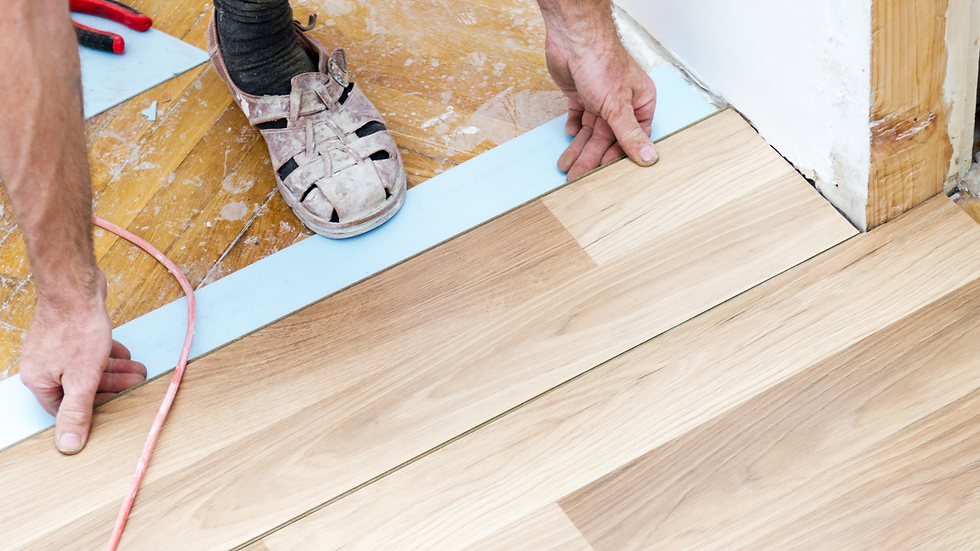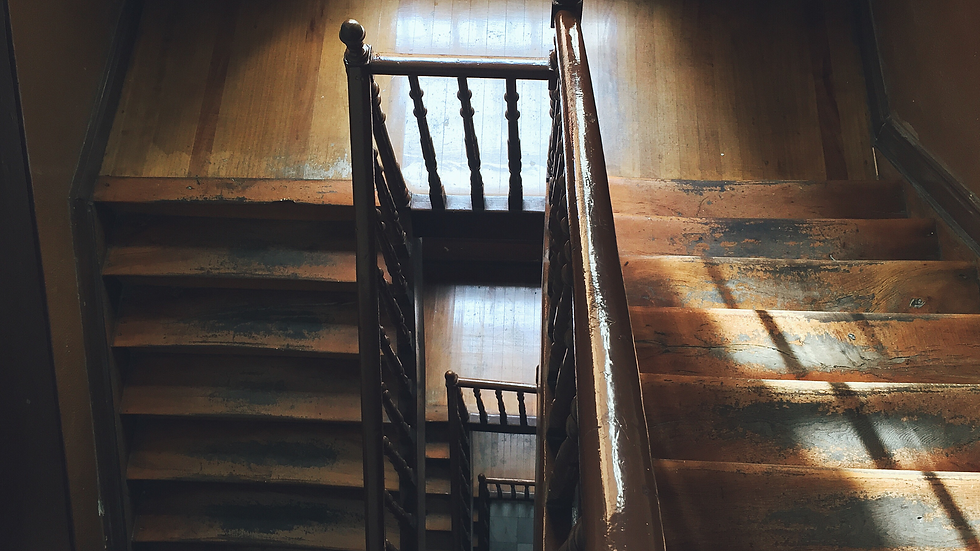Is It Better to Replace Railings Before or After New Flooring?
- Up Stairs Rails

- Sep 12
- 5 min read

If you’re upgrading your stairs, there’s one question almost every homeowner asks: should the railings go in before or after the new flooring?
It might sound like a small detail — but the order you choose can have a big impact on your project timeline, your budget, and the final look of your stairs. And while there is a general rule of thumb (we’ll cover it), the real answer depends on your layout, safety needs, and what type of railing system you’re planning to install.
In this post, we’ll break down the pros and cons of each approach, share real-world advice from our New Jersey railing installation team, and help you avoid common mistakes that can lead to patchy finishes or costly do-overs. Whether you're planning to upgrade your stair treads, refinish the floor, or replace your handrail entirely, you'll want to get the order right from the start.
Worried this will turn into a massive renovation? Here's what to expect from a typical railing replacement.
Flooring or Railing First? Here’s the Short Answer
Let’s cut right to it: in most home renovations, it’s better to install your new flooring first, then bring in the railing team.
This order avoids all the awkward stuff — no cutting floorboards around balusters, no patching gaps, no second-guessing measurements. Your floors go in clean and seamless, and your railing sits neatly on top for a crisp, finished look.
But here’s the thing: that rule isn’t universal. There are real exceptions where it makes more sense to install the railings first. Think safety concerns, wall-mounted handrails, or projects involving structural changes to your stairs or landings. In those cases, holding off on the rail might not just delay your project — it could cost you extra down the line.
The best move? Talk to your flooring and railing contractors before you commit to either timeline. The order you choose has a big impact on how everything looks, fits, and holds up over time — especially in high-traffic areas like staircases.
Not sure what your flooring install will involve? Here’s a good flooring cost and planning guide from Angi to help you map it out.

Why Railings Usually Come After New Flooring
If you’re planning a full staircase upgrade, one question always comes up: Should we do the floors first, or the railing? And 9 times out of 10, the answer is: flooring comes first.
Why? Because it gives you a cleaner install, protects your investment, and helps your railing contractor get everything just right. Let’s break it down:
Cleaner Finish (No Awkward Gaps or Cut-Arounds)
When the floors go in first, the railing sits directly on top — no need to notch around balusters or patch weird gaps at the base. That means crisp, seamless transitions where the railing meets your treads or landings. No chunky trim, no messy caulk lines. Just that clean, modern look that feels built-in, not retrofitted.
This matters even more if you're investing in a modern stair railing with box newels or sleek black bars — the details will stand out, so you want every edge to look intentional.
No Risk of Damage to Your New Rail
Flooring installs aren’t gentle. Between heavy tools, adhesives, foot traffic, and dust, your brand-new railing would be sitting in the middle of a construction zone. Why risk dings and scratches on a custom handrail you just paid for?
Let the flooring crew do their thing first. Then your railing contractor can come in, do a clean install, and leave it looking showroom-perfect.
More Accurate Measurements (And Fewer Surprises)
Here’s a pro tip: railing height, post spacing, and code compliance all depend on finished floor height — not subfloor. So if the flooring isn’t in yet, your railing contractor is working off guesswork. That can lead to small but frustrating issues: misaligned posts, stair spindles that don’t meet spacing requirements, or a handrail that feels just a little too high.
Once the flooring is installed, we can measure everything precisely — and give you a code-compliant, custom-fit railing that looks like it was made for the space. (Because it was.)

When You Might Replace Railings First
While flooring usually comes first, there are some situations where it makes more sense to prioritize your railings — especially when safety, layout changes, or wall-mounted options are in play.
Structural or Safety Issues
If your current railing is loose, unstable, or doesn’t meet safety code, don’t wait on replacing it. Whether it’s wobbly balusters, missing handrails, or a setup that’s no longer up to IRC code requirements, safety should always come first. In these cases, we recommend addressing the railing before any flooring work — and if the full remodel is happening later, a temporary solution can be installed in the meantime.
A good railing contractor can install a safety-compliant temporary system if you’re planning to update your floors shortly after.
Custom Layout Changes
Thinking of expanding a landing, adding a half wall, or reframing the top of the staircase? These kinds of structural layout changes often require the railing framework to be roughed in first. Installing your railing first in this case allows you to fine-tune the final layout — and prevents rework later.
Wall-Mounted Handrails
Wall-mounted rails are the exception to almost every rule here. Because they don’t interfere with floor installation, these can usually be installed before or after, depending on your schedule. In fact, many homeowners have them done early in the process if the wall is already prepped.

Timing Your Project Like a Pro
The biggest mistake homeowners make? Waiting too long to get all the moving pieces lined up.
If you know you’ll be replacing both your floors and stair railings, don’t wait until one job is done to start planning the other. Start by getting estimates from both your flooring contractor and railing installation pro early on — even if you’re only ready to move forward with one part. This gives you more control over scheduling and helps you budget accurately from the start.
If your floors are being sanded and sealed (like refinishing hardwood), give them a few days to fully cure before scheduling your railing install. This buffer not only protects your floors, but ensures a smoother handoff between trades — especially if your railing company is attaching posts directly to treads or landings.
And don’t be afraid to ask your contractors to coordinate. At Up Stairs Rails, we regularly collaborate with flooring crews to make sure everything goes in the right order — and looks seamless once it’s done.
Want to see how stair-related upgrades stack up in overall home value? Check out Remodeling Magazine’s Cost vs. Value Report for staircase projects. You’ll see why getting the timing (and the craftsmanship) right is worth it.

Before you start tearing out treads or shopping for railings, take a step back. The best remodels aren’t rushed — they’re planned with precision. That means understanding how one part of the project impacts another, and choosing the right sequence to get clean results and avoid costly surprises.
Choose What Works for Your Project
In most cases, flooring comes first — especially if you're installing new hardwood, vinyl, or tile. It gives railing contractors a finished surface to measure against, prevents damage to your new rail, and creates a polished, professional look.
But that’s not a hard rule. If your current railing is unsafe, if you're reconfiguring your stair layout, or if you're planning to install wall-mounted handrails, it might make more sense to start there.
The real key? Talk to both pros early. Flooring and railing work go hand in hand, and when they're planned together, everything runs smoother. Need help mapping it all out? Don’t miss our guide on 5 Must-Do Steps Before Installing Your New Railing for insider tips on getting it right from day one.
Still not sure which comes first in your space? Reach out to Up Stairs Rails — we’ll collaborate with your flooring team and create a railing install plan that’s safe, seamless, and stunning.









Comments